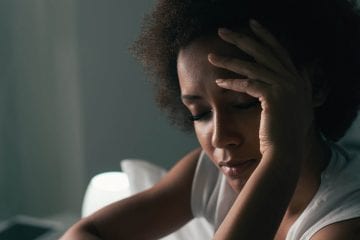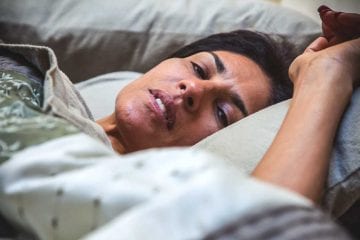Advanced Sleep-Wake Phase Disorder is one of several circadian rhythm sleep disorders. Circadian rhythm is the internal clock that regulates the periods of sleep and wakefulness. When this internal clock gets disturbed or changed for various reasons, a person is not able to fall asleep and wake up at the appropriate times.
People who fall asleep early in the evening and wake up too early in the morning have a circadian rhythm disorder known as Advanced Sleep-Wake Phase Disorder. The condition is marked by the fact that the individual’s sleep schedule is several hours earlier than the desired or conventional one. An example of this is someone who goes to sleep around 8pm and wakes up at 4 or 5am when there is no rational need to be up so early. The pattern is consistent and much less common than Delayed Sleep-Wake Phase Disorder. In order to diagnose this condition a doctor must rule out other factors such as depression as a cause. Read on to find out more about this disorder.
The symptoms of advanced sleep-wake phase disorder
People with this disorder may experience:
- altered sleep patterns that are not explained by other sleep disorders such as narcolepsy or sleep apnea
- feeling refreshed and alert upon awakening
- falling asleep during physical activities such as exercising or driving
- falling asleep during passive activities such as eating or reading
- inability to fall back asleep after awakening early in the morning
- an irresistible urge to go to sleep early in the evening.
Unlike some other disorders in the same category, the person’s quality of sleep is normal. It is the timing that is off. It tends to be several hours earlier than normal and out of sync for their age. People with this disorder sleep 7 - 8 hours, but may wake up at 4am and not be able to go back to sleep.
The exact cause of this disorder is not known, but several factors seem to follow a logical pattern of thinking.
Depending on the person’s age, it could be caused by a decreased amount of sunlight and the process of producing melatonin that occurs as people age.
While this disorder is less common than other sleep disorders, the incidence may be underestimated because an early sleep pattern causes fewer social conflicts. No one gets in trouble for getting to work too early. In fact, your boss might think that it’s because you want a promotion. For some people it may be a way to avoid uncomfortable social gatherings. It’s easy to offer the excuse that you have to get up early in the morning to get out of an awkward situation.
The considered factors
Age
Advanced sleep-wake phase disorder is more common in people aged 40 to 60 years. This may be due to the fact that as we age, our bodies produce less melatonin. It is not common in children, but some with neurological or developmental disorders often show symptoms of an advanced sleep-wake phase disorder.
Amount of exposure to light
A person needs to be exposed to the bright light in the morning to efficiently produce melatonin. Because advanced sleep-wake disorder sufferers wake up so early, their exposure to bright light is earlier than normal, signaling an earlier time for sleepiness. Bright light in the evening hours delays the onset of sleep. Similarly, if a person doesn’t get enough bright light during daytime, his/her body won’t produce enough melatonin for healthy sleep in the evening.
Other factors that affect sleep
Medications, changes in time schedule, substance abuse, depression, jet lag, shift work, narcolepsy, and sleep apnea must be ruled out before a diagnosis of Advanced Sleep-Wake Phase Disorder can be made.
Treatment
In an attempt to affect the sleep cycle of individuals diagnosed with advanced sleep-wake phase disorder an experiment was done with 47 adults aged 40 to 60. The group was exposed to bright light for a couple of hours early in the evening, but had minimal results. However, this could happen because the light used in the study (265 lux) was not as intense as bright light treatment (2,000 to 10,000 lux), and it was used from 3 to 5pm, which may have been too early to offset sleepiness.
Another experiment involved exposure to bright light for 30 minutes beginning approximately one hour before the individual’s normal bedtime. The study lasted over 3 weeks; there was an improvement in early morning awakenings by about 20 minutes.
A more successful trial was done with a study of subjects diagnosed with advanced sleep-wake phase disorder using bright light therapy for 2 hours in the evening between 8 and 11pm for 12 consecutive days. An average delay in bedtime of almost 30 minutes, as well as approximately 13% increase in sleep efficiency, increased REM latency, decreased percentage stage 1 nREM sleep, and increased percentage stage 2 nREM sleep.
A subsequent study was performed using an almost identical protocol, but failed to produce the same results. There were slight differences, but no real improvement. The group fell asleep 44 minutes later, but during the maintenance portion which included light therapy twice a week for 3 months the results decreased. One reason that researchers discussed was that the group used in this study was not formally diagnosed with advanced sleep-wake phase disorder, as was required for the first group of participants.
Followup studies were performed with a group using the previous protocols of an official diagnosis of ASPD, bright light therapy administered late in the evening (from 8pm to 1am). The results included a 2-hour delay in the onset of sleep. An improvement of 90 minutes was obtained in the 4-week followup period compared to 44 minutes in the previous group.
There are enough scientific data to conclude that delaying the onset of sleep with bright light late in the evening is an effective treatment for people diagnosed with ASPD. The brighter the light, the better. 4,000 lux were more effective than light in the 2,000 range. The exposure of 4 hours is more effective than that of 2 hours.
If you are experiencing any of the symptoms listed above, see your doctor for diagnosis and treatment. The process is fairly simple - the doctor will ask you about your medical history, lifestyle, eating, and normal sleeping routine, medications, and drug use.
You may be asked to keep a sleep journal for a few weeks to see what patterns emerge. Is your sleep consistent every night? Do you begin to get sleepy at roughly the same time, or is it more varied? All things must be considered when evaluating patients for sleep disorders. For an accurate diagnosis to be made the indicators must be present without extenuating circumstances, there can’t be any other explanation for your symptoms.
Because so many sleep disorders are so closely related, it is hard to make an accurate diagnosis unless all the pieces of the puzzle fit together. The light treatment has little effect on people not officially diagnosed with ASPD.
Depending on your schedule, treatment may not be necessary. If you work before 7am, waking up early may not be an issue. Your treatment may be needed for a short term to delay sleep for a better quality of life in certain circumstances. Your doctor will design a treatment to help you reset your clock based on your current sleep needs.
Conclusion
The most effective treatment for ASPD is evening bright light therapy. While some of the results have been conflicting, there have been improvements overall. In order for the treatment to be effective the subject’s internal clock must be adjusted or reset to a later time for both sleep onset and wakefulness. Bright light used in the evening before bedtime helps to reset your circadian clock. Your doctor may also suggest a slow release form of melatonin to help you sleep longer in the mornings or if you wake during the night. Gradually delaying your bedtime by 30 minutes per night can help in delaying sleep. It needs to be a slow adjustment over several weeks. Another part of the disorder is that people with it get used to early sleep and wake times and it becomes a habit. Purposely delaying bedtime and the onset of sleep can help you achieve good results.
See a doctor if you have concerns that you may have this disorder. The quicker you begin treatment, the quicker you will see long-lasting results.



